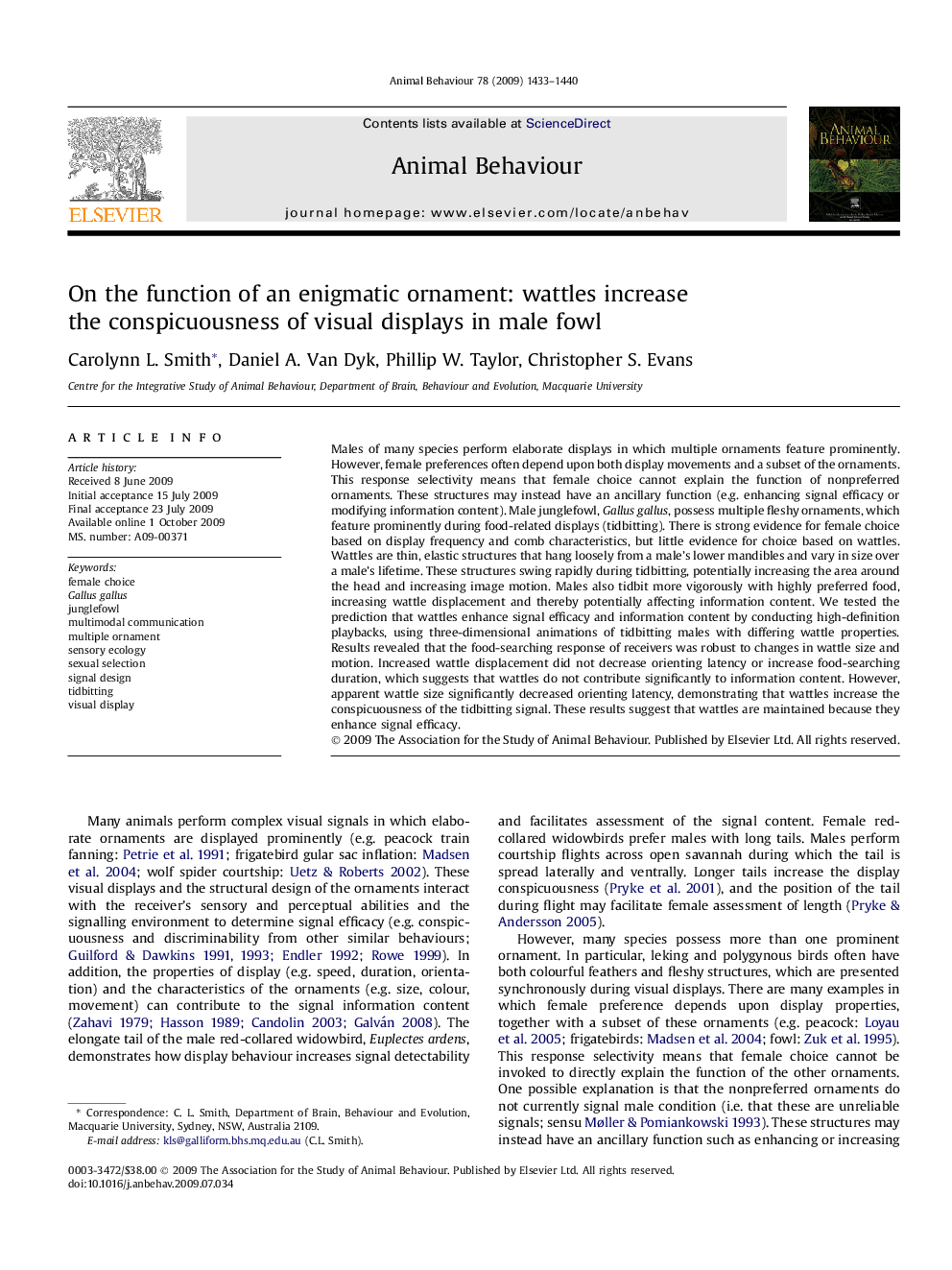| Article ID | Journal | Published Year | Pages | File Type |
|---|---|---|---|---|
| 2417557 | Animal Behaviour | 2009 | 8 Pages |
Males of many species perform elaborate displays in which multiple ornaments feature prominently. However, female preferences often depend upon both display movements and a subset of the ornaments. This response selectivity means that female choice cannot explain the function of nonpreferred ornaments. These structures may instead have an ancillary function (e.g. enhancing signal efficacy or modifying information content). Male junglefowl, Gallus gallus, possess multiple fleshy ornaments, which feature prominently during food-related displays (tidbitting). There is strong evidence for female choice based on display frequency and comb characteristics, but little evidence for choice based on wattles. Wattles are thin, elastic structures that hang loosely from a male's lower mandibles and vary in size over a male's lifetime. These structures swing rapidly during tidbitting, potentially increasing the area around the head and increasing image motion. Males also tidbit more vigorously with highly preferred food, increasing wattle displacement and thereby potentially affecting information content. We tested the prediction that wattles enhance signal efficacy and information content by conducting high-definition playbacks, using three-dimensional animations of tidbitting males with differing wattle properties. Results revealed that the food-searching response of receivers was robust to changes in wattle size and motion. Increased wattle displacement did not decrease orienting latency or increase food-searching duration, which suggests that wattles do not contribute significantly to information content. However, apparent wattle size significantly decreased orienting latency, demonstrating that wattles increase the conspicuousness of the tidbitting signal. These results suggest that wattles are maintained because they enhance signal efficacy.
